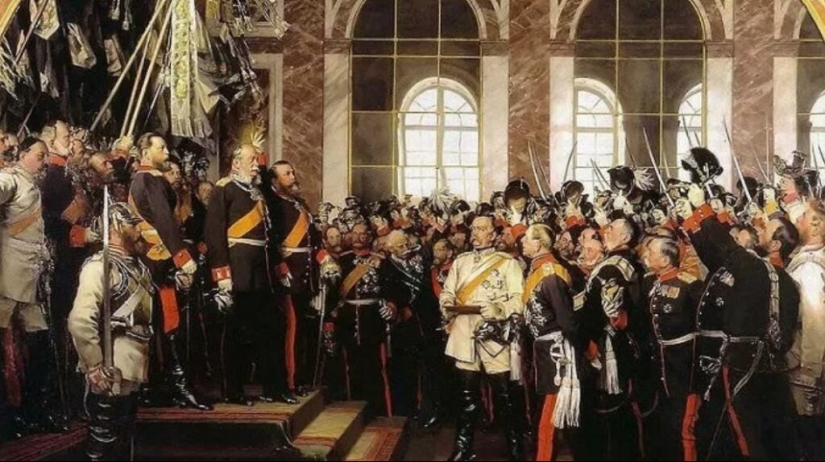Why did the Germans have three reichs and how did they differ
Categories: History
By Pictolic https://pictolic.com/article/why-did-the-germans-have-three-reichs-and-how-did-they-differ.htmlEven schoolchildren know that Adolf Hitler called his state the Third Reich. In the spring of 1945, a fat point was put in its history. But very few people will tell you what the Reich is and where two more have gone. Let's dive into German history and deal with the three Reichs and their Fuhrers.

The Reich, or rather the Reich (das Reich) is not a state, as some believe. This word means exactly the empire with all the circumstances that follow from it. The Germans consider the First Reich to be the "Holy Roman Empire of the Teutonic Nation." It is inextricably linked with the personality of the Frankish King Charlemagne (768-814).
In 800, in Rome, Charles's head was crowned with the imperial crown. It is believed that this is how the Great Roman Empire was reborn, although this is actually not the case. The title of Emperor of the Western Roman Empire (the Eastern capital was in Constantinople) was inherited by Charlemagne's son Louis I the Pious (814-840).

But the grandchildren of Charles could not save the empire and divided it among themselves. Relative unity was observed for some time in the German lands. King Otto I (936-973) seemed to the Pope so worthy of a statesman that he was crowned with the very crown of the empire.

The Empire retained the name of the Holy Roman Empire, but, in fact, it included the Teutons and the peoples captured by them. This is how the First Reich, the most viable one, appeared in Europe. Its territories and national composition changed, but we can say that it existed from 962 to 1806. Since the 13th century, the crown was not inherited, and the emperor was chosen at a congress of feudal rulers (electors).
The First Reich, in addition to German territories, included Czech, Italian and even Dutch lands. The Bohemian king was one of the electors. In the 16th century, the imperial crown settled on the heads of the Austrian archdukes. The First Reich gradually began to decline, and in the 17th century it already existed only formally.

By this point, Germany had split into 300 states with their own rulers. The agony of the empire lasted for about a century and a half until the beginning of the 19th century. In 1806, the First Reich was liquidated by Napoleon Bonaparte, who claimed to have revived the Western Empire.
The Second Reich, or as it is also called the German Empire, was already the national state of the Germans. The exceptions were some Austrian lands and some cantons of Switzerland. The creation of the Reich was solemnly announced after the victorious war of Prussia with France, which ended in 1871.

The Second Reich is a bourgeois federal state, headed by the Kaiser, aka the King of Prussia. Numerous German lands, except for free cities, were headed by hereditary monarchs. The elected legislative power somehow got along with them.
The state system was complex, incomprehensible and inefficient. But at the same time, all estates had equal rights, so the Second Reich can be called the most progressive of all. It ceased to exist in 1918, after the defeat of Germany in the First World War.
The third Reich was the brainchild of the Nazis. It was conceived as a revenge after the defeat in the First World War. He was ugly in his form of power, intolerant of other nations and simply inhuman. We can say that it was a pathetic parody of the classic German Reich, founded by people with criminal tendencies.

The empire was created for the sake of war and by the method of war. It is not surprising that the Third Reich lasted the least – from 1933 to 1945. Unfortunately, in this short time, he claimed a huge number of lives and broke the fate of entire generations. Unfortunately, supporters of the Reichs still live in Germany. They are united in semi-underground organizations, whose members do not want to recognize the modern state structure of Germany and dream of the Fourth Reich.
Recent articles

Winter is a special time of the year, someone is afraid of her, someone is waiting for snow days to build a snowman or go down the ...

The heroes of their photos are used to humiliate others, cheerfully and carelessly shoot everything on the phone and post the ...

Every day, photographers around the world are looking for new ways to tell stories or capture something we haven't noticed ...